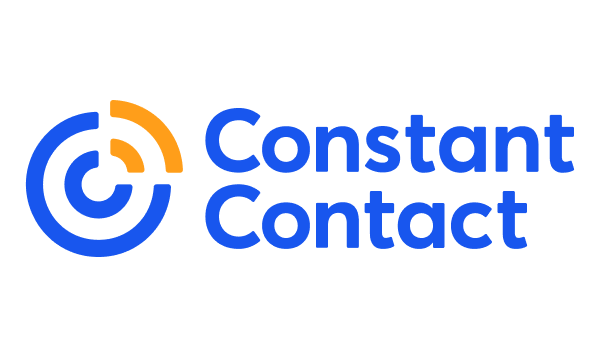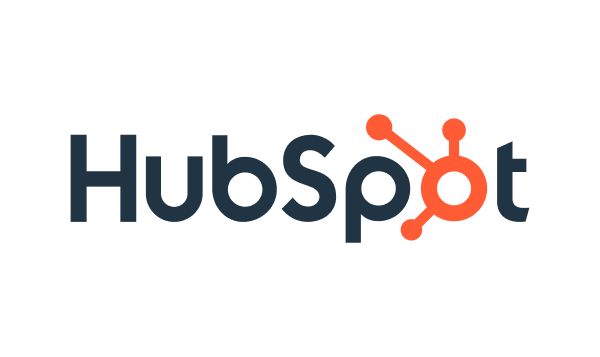- Premium features included
- No hidden costs or usage limits
- Scale from startup to enterprise



Let’s face it — picking the right email marketing platform can feel overwhelming. I’ve spent years helping clients navigate this decision, and the Constant Contact vs HubSpot debate comes up constantly in my consulting work.
These two platforms couldn’t be more different in their approach. Constant Contact offers that “get-going-quickly” simplicity that many small businesses crave, while HubSpot delivers a comprehensive marketing ecosystem that grows alongside ambitious companies.
After implementing both for numerous clients across different industries, I’ve developed some clear insights about which businesses thrive with each platform. Let me break down what I’ve learned from real-world implementation experience rather than just feature lists.
Constant Contact
HubSpot
Best For
Small businesses, nonprofits, event marketing
Scaling businesses needing CRM + marketing automation
Pricing
Mid-range pricing, simple tiers
Free plan available; paid plans scale quickly
Ease of Use
Very beginner-friendly
Moderate learning curve with more tools to explore
Value for Money
Great for basic campaigns and support
High for teams using CRM, sales, and automation features
Constant Contact
HubSpot
Overall Strengths
Overall Weaknesses
• Limited automation
• Fewer integrations
• Basic segmentation
• Not ideal for complex workflows
Constant Contact
HubSpot
Email Campaigns
Automation
Landing Pages & Forms
Segmentation & Personalization
Reporting & Analytics
Integrations
After setting up numerous clients on Constant Contact, I’ve come to appreciate its no-nonsense approach. The email editor isn’t flashy, but it’s remarkably intuitive — you won’t waste hours trying to figure out basic formatting.
Where Constant Contact particularly shines is with event marketing. I helped a nonprofit client coordinate their annual fundraiser using Constant Contact’s event tools, and the integration between email invitations, registration forms, and attendee tracking saved them countless hours of manual work.
Their customer support deserves special mention too. One small business owner I work with actually received a phone call from a Constant Contact rep who noticed they were struggling with a particular feature – that level of proactive support is increasingly rare in software.
The biggest limitation? Automation capabilities feel somewhat basic after you’ve used more advanced platforms. You can create welcome sequences and birthday emails, but complex, behavior-driven workflows simply aren’t in Constant Contact’s wheelhouse.
HubSpot operates on an entirely different level of sophistication. The platform’s email marketing features are deeply integrated with its CRM, creating opportunities for personalization that Constant Contact simply can’t match.
One e-commerce client leveraged HubSpot to create customer segments based on purchase history, website behavior, and email engagement – then automatically enrolled contacts in different nurture sequences based on these factors. The result was a 37% increase in repeat purchases over six months.
The reporting capabilities in HubSpot provide genuine insights rather than just metrics. Instead of simply showing open and click rates, HubSpot connects these actions to actual business outcomes – which emails influenced deals, which landing pages generated qualified leads, and so on.
That said, this power comes with complexity. Even tech-savvy marketers typically need several weeks to become proficient with HubSpot’s more advanced features. The platform offers excellent learning resources, but the time investment is undeniable.
Subscriber Count
Constant Contact Pricing (Standard)
HubSpot Pricing (Marketing Hub Starter)
Key Differences
1,000
$35/month
$50/month
Constant Contact is more affordable; HubSpot includes CRM-based automation.
2,500
$55/month
$75/month
Constant Contact offers basic tools; HubSpot adds behavior-based triggers.
5,000
$80/month
$125/month
HubSpot provides advanced segmentation and reporting; Constant Contact remains simpler.
10,000
$120/month
$250/month
Constant Contact stays budget-friendly; HubSpot scales with marketing workflows.
25,000
$200/month
$450+/month
HubSpot includes full CRM integration and deeper analytics; Constant Contact remains basic but affordable.
What I’ve found most interesting is how differently clients perceive these costs. For businesses focused primarily on email newsletters, Constant Contact’s pricing feels reasonable. But for companies integrating marketing with sales processes, HubSpot’s premium often pays for itself through improved conversion rates and better visibility into ROI.
A marketing agency I consult with actually calculated that HubSpot’s higher cost was offset by eliminating three other tools they previously needed for landing pages, forms, and CRM. This “platform consolidation” value isn’t obvious from pricing pages but becomes apparent in practice.
Constant Contact Free Plan
HubSpot Free Plan
Subscribers
Up to 500
Unlimited contacts (HubSpot branding required)
Emails/Month
2,000
2,000
Automation
Not included
Basic automation included
Landing Pages/Forms
Yes (basic editor)
Yes (smart forms & landing pages)
Branding
Constant Contact branding on emails
HubSpot branding on emails and landing pages
Constant Contact’s free plan is simple and focused, offering core functionality for sending email campaigns to a small audience, with limited customization and no automation. It’s a good fit for businesses that want to test basic email marketing without diving into complex features.
HubSpot’s free plan, on the other hand, provides significantly more flexibility, including basic automation, smart forms, and CRM integration — but all with mandatory HubSpot branding. This makes it more appealing to startups or growing teams that value automation and customer tracking from day one.
However, both platforms restrict support access and reserve advanced features for paid tiers.
Constant Contact
HubSpot
Working with Constant Contact feels like walking into that local coffee shop where they remember your order. It doesn’t try to dazzle you with cutting-edge features or overwhelming options — it just aims to help you send good-looking emails without inducing a migraine.
What’s always impressed me about Constant Contact is how approachable everything feels. The interface is clean and intuitive, and when you inevitably get stuck, there’s actual human support available — increasingly rare in today’s chatbot-dominated support landscape. For small businesses, particularly those in traditional industries or local services, this human touch can be incredibly valuable.
Their event marketing tools deserve special mention — they’re surprisingly robust, making Constant Contact a standout choice for organizations that host regular workshops, classes, or fundraisers. I’ve set up several non-profits on the platform specifically because of how well it handles event promotion and registration.
Where Constant Contact falls short is in sophisticated marketing automation and deep data analysis. If you’re looking to create complex, behavior-triggered journeys or slice and dice your audience data in multiple ways, you’ll quickly bump into limitations. The segmentation options feel basic compared to competitors, and the reporting doesn’t provide the depth of insights that data-driven marketers crave.
HubSpot isn’t just an email marketing platform — it’s an entire marketing ecosystem, and that comprehensive approach shows in both good and challenging ways.
The platform offers impressive depth for businesses willing to invest in it. The email marketing tools connect seamlessly with CRM data, allowing for highly personalized communication based on where contacts are in their journey. The automation capabilities can handle intricate workflows triggered by specific behaviors or time-based conditions. And the analytics provide genuinely useful insights that can inform your broader marketing strategy.
I’ve been particularly impressed by how HubSpot’s forms and landing pages adapt based on visitor information — returning visitors can see different content or skip fields they’ve already completed. For businesses focused on lead nurturing and conversion optimization, these tools provide a significant advantage.
However, this sophistication comes with tradeoffs in complexity and cost. The interface, while well-designed, presents a steeper learning curve than simpler platforms. I’ve watched marketing managers get visibly overwhelmed during onboarding, unsure where to even begin with all the available options.
The pricing structure also reflects this “enterprise” direction. While the free plan is surprisingly generous, costs climb rapidly as you need more advanced features or higher email volumes. What starts as free can quickly become a significant investment as your needs grow.
Constant Contact consistently earns praise for its intuitive layout. Users frequently mention how quickly they were able to create their first campaign without feeling overwhelmed. One small business owner I worked with described it as “refreshingly straightforward in a world of increasingly complicated tools.”
HubSpot also earns good marks for user experience, but with more caveats. The interface is polished and modern, but the sheer breadth of available tools means there’s more to learn. As one reviewer put it, “It’s beautiful but busy.” The platform tries to guide you through this complexity with excellent onboarding, but there’s no escaping the learning investment required.
The learning curve for Constant Contact tends to be gentle, making it particularly well-suited for small businesses or individuals new to email marketing. Most users report feeling comfortable with the core functionality within days rather than weeks.
HubSpot demands more investment to utilize fully. While creating a simple email campaign is straightforward enough, leveraging the platform’s more advanced capabilities requires time and patience. I’ve found that teams often need dedicated training sessions to master features like workflow automation or contact scoring.
Constant Contact users consistently highlight reliability and customer service. One reviewer noted, “Their support team has saved me more than once when I needed to get a campaign out quickly.” This emphasis on support appears frequently in positive reviews, suggesting it’s a genuine differentiator.
HubSpot users often praise the platform’s comprehensive nature. “Having everything in one place has transformed how we track leads,” shared one marketing director. However, pricing concerns come up repeatedly: “We love the platform but dread the renewal conversations with our finance team.” This tension between capability and cost is a recurring theme in HubSpot reviews.
